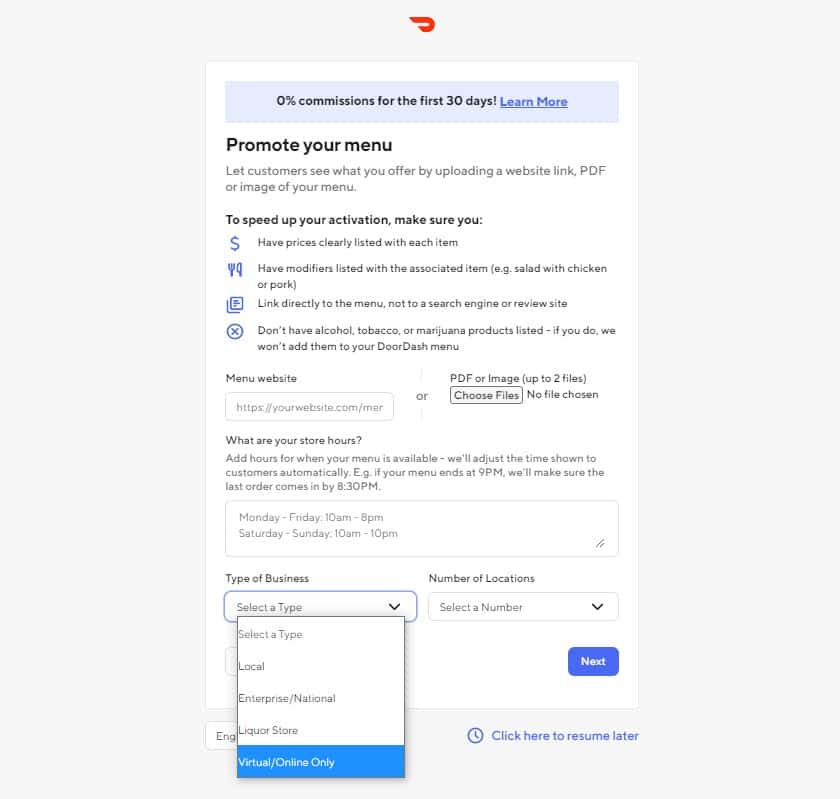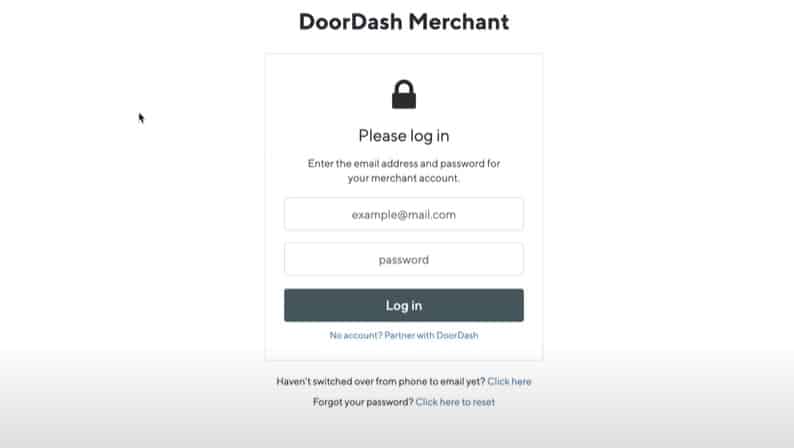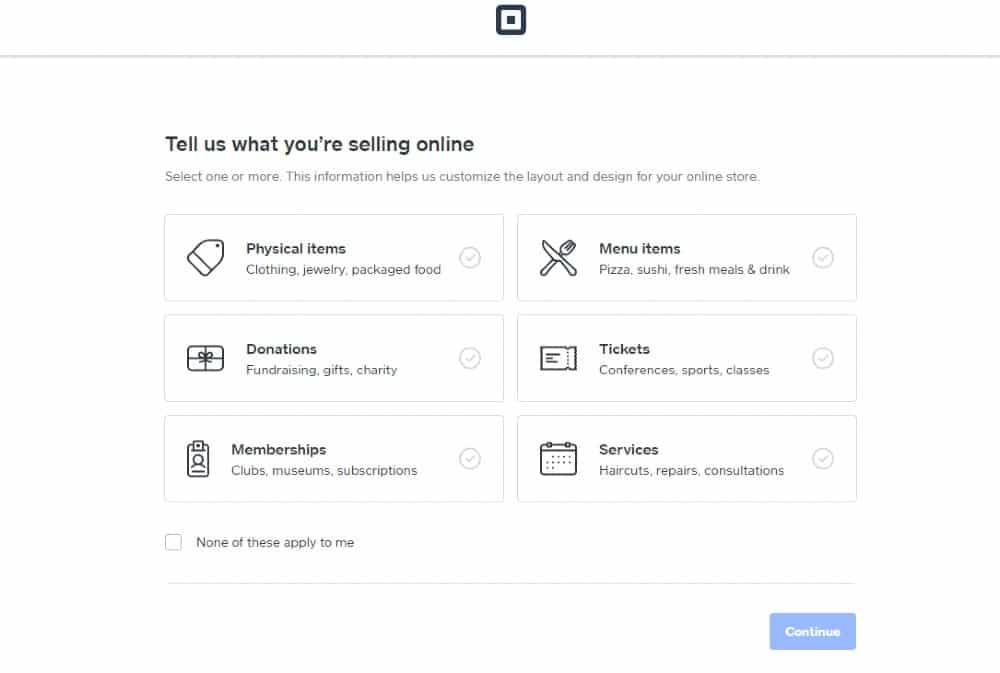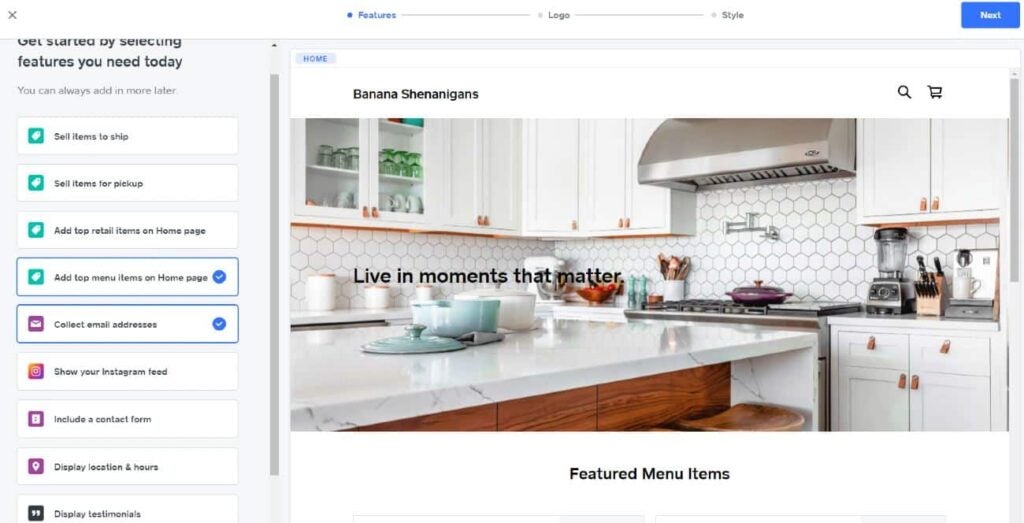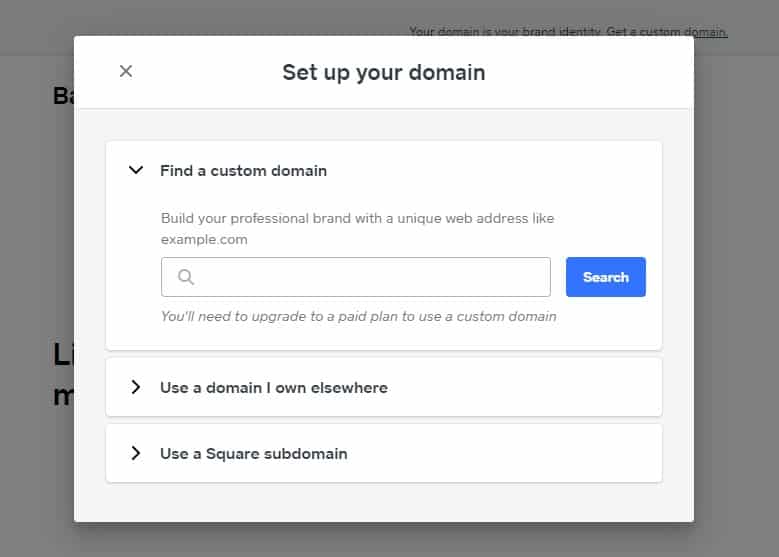Ghost kitchens, delivery-only restaurants that rely on third-party delivery platforms or other online ordering sites for sales, have become a major force in the food industry. They drive sales for food businesses and give customers more food variety. With no physical space for customers to dine, ghost kitchens have generally low overhead costs and are relatively inexpensive to start ($20,000–$60,000 on average compared to $40,000–$200,000 for food trucks, for example).
You can run an independent ghost kitchen from a freestanding commercial kitchen space, a shared commercial kitchen, or sublease space from an existing restaurant.
Learning how to start a ghost kitchen is pretty simple. Let’s walk through the steps.
1. Create Your Concept
The first step to getting your ghost kitchen off the ground is choosing a concept. Your ghost kitchen concept is, essentially, your menu and brand name. Unlike traditional brick-and-mortar restaurants, ghost kitchens’ names and menus need to be optimized to perform well in online searches.
When thinking of your concept, your goal is to hone in on a niche product that you can execute extremely well. Keep your menu streamlined and targeted to consumers looking for that exact product. A chicken wing concept is more likely to attract repeat orders with a name like Wing King rather than Third Street Bistro.

There are a couple of steps to creating your ghost kitchen concept.
2. Incorporate & Set Up A Bank Account
Once you’ve settled on a concept and a name, you’ll need to get some business bits out of the way. If you are adding a ghost kitchen as an additional revenue stream to an existing restaurant, you can skip this and move to step 3. But if you are operating as a new, independent ghost kitchen, you’ll need to incorporate so that your business can be licensed and insured.
3. Brand Your Business
Now that you have some of the dry business stuff out of the way, it’s time to get creative. Your ghost kitchen needs an eye-catching logo that is easy to read in search results and will look good printed on bags, stickers, and to-go containers. You don’t have to be a creative genius yourself; you can hire freelance designers easily via websites like Fiverr and Upwork.
When using these freelance sites, be sure to research and use verified or well-reviewed talent. They may cost a little more, but it is worth it to make your brand stand out!

You can find freelancers in virtually every price range, but you should plan to spend anywhere from $50 to $400 for a logo design. For ghost kitchens, getting a complete brand kit is also a good idea. A brand kit typically comes with multiple copies of your logo that are optimized for various social media platforms, printed media, and website use. A brand kit for a ghost kitchen might also include stickers for sealing to-go bags, business cards, and menu designs that you can use in social media ads. Brand kits tend to be pricey, but you can generally find them for around $350 to $800, depending on the designer’s skill level.
4. Find a Location
Ghost kitchens can be housed in freestanding, independent delivery-only kitchens, shared commercial kitchen spaces, or subleased restaurant kitchens. Freestanding, delivery-only kitchens are the most expensive. You’ll need to buy all of your equipment and secure all required licenses, and you may need to secure building permits.
Shared commercial kitchen spaces are easier to find in recent years. The COVID-19 pandemic encouraged a boom in commercial kitchen construction, and ghost operators can now find spaces in co-working kitchens built especially for ghost operations by CloudKitchens, Reef, and Kitchen United. You can also find general commercial kitchen spaces in your area by checking sites like the Kitchen Door and Commercial Kitchen for Rent.
Suppose commercial kitchens are filling up in your area. In that case, you can reach out to restaurants that operate during limited hours (breakfast only, dinner only, etc.) and ask if they would be interested in subletting their kitchen to you during the off-hours. Shared spaces offer one benefit that freestanding kitchens do not: they are often all set with the DOH on many of the rules considering owning a food operating space.
5. Get Permits, Licenses & Insurance
Like any restaurant, your ghost kitchen will need several permits and licenses from your local fire, health, and tax authorities. Some permits are tied to the building itself and require site inspections. If you operate your ghost kitchen from a new, freestanding, independent location, you’ll need to obtain these.
If, however, you sublease from an existing restaurant or lease space in a shared commercial kitchen, you’ll want to verify that the kitchen has the proper permits in place before laying down rent and security deposits. On the other hand, if you are adding a ghost concept to your existing restaurant, your existing licenses should cover your ghost operation.
Additionally, your space will be inspected and graded by the local health department and you’ll need HACCP (Hazard Analysis and Critical Control Point) plans and other food and employee safety requirements before operating. Many states require a manager on site to have a food safety manager’s certification, and you need an established system for food safety monitoring and traceability.
6. Raise Funds (If Needed)
Ghost kitchens are generally a low-cost affair—$20,000 to $60,000 depending on how much of a premium kitchen you build out. If that is outside your budget, you’ll need to raise funds. Crowdfunding is a great option, as is reaching out to friends and family for contributions or loans. If you plan to approach a bank for a small business loan, you should create a business plan to strengthen your loan application.
Most ghost kitchens are housed within existing commercial kitchen spaces, so it is entirely possible to open a ghost concept without building or renovating a kitchen space. However, many ghost kitchens may discover that they need additional storage, especially if the business is busy. For example, if your chicken wing concept takes off, you may need to purchase additional freezers or reach-in refrigerators to hold enough stock for weekend rushes. If you work in a shared commercial kitchen like CloudKitchens, you may also need to supply your own equipment.
7. Take Mouthwatering Food Photos
Mouthwatering food photos are an absolute requirement for ghost kitchens. To encourage new orders, your food needs to stand apart from competitors on the same ordering site. It is a good idea to hire a professional food photographer to assist. Costs range from $500 to $50,000, depending on your market and the photographer’s popularity.
You don’t need a photo of every item on your menu; great images of your top five to 10 items are usually enough to get started. Prioritize photos of signature dishes, dishes that turn the best profit for your business, and partnerships with other brands.
The lowest-cost option, of course, is to take the photos yourself. If this is your only option, keep these food photography tips in mind:
- Choose a simple background: Nothing should distract from your food. When in doubt, a white plate on a bright background is a good idea.
- Focus on the food: Sides of sauce and garnishes are fine, but for your online ordering menu, you don’t want extra items like cutlery, wine glasses, and hands in the shot.
- Use even lighting: Good lighting does a lot to make a dish look appetizing. If you don’t have access to lighting equipment, photograph your food under natural light, diffused with parchment paper (which any kitchen should have on hand).
If your menu is filled with common comfort foods, you might be tempted to use stock images. If your finished dish doesn’t look like the image, however, your customers may be disappointed, and you may get many complaints and requests for refunds. Your food images should look like your actual finished dishes—and they should look as good as possible.
Tip: Some third-party platforms offer food photography as a service to partner restaurants.
8. Decide Your Ordering, Payment & Delivery Strategy
There are three basic ways to accept online orders and payments and deliver your food: third-party platforms, direct internal systems, or a hybrid strategy. One of the most compelling aspects of a ghost kitchen business is extreme flexibility. You can start with one ordering and delivery strategy—say, relying on third-party platforms exclusively—and shift to another as your business grows.
The most straightforward online ordering, payment, and delivery strategy for fledgling ghost kitchens is to sign up with third-party platforms like DoorDash, Grubhub, and Uber Eats. The platforms handle your online orders, process payments, send delivery drivers, then deposit your portion of the revenue into your business bank account. Like many small business solutions, third-party platforms have pros and cons, though.
Signing Up With Third-party Platforms
Signing up for third-party platforms is easy, and the contracts are nonexclusive. Most ghost kitchens rely on several third-party delivery platforms to boost their visibility. You can list your ghost kitchen on every third-party platform that operates in your location. When you sign up with DoorDash, Grubhub, Postmates, Uber Eats, Caviar, or others, you will be prompted to enter your restaurant information, like hours and phone number, along with your menu and sometimes menu photos.
To speed the signup process, you’ll need to have a few things handy:
- Your location address, phone number, and email address
- A PDF copy of your menu or a web link to your menu
- Business bank account information
- EIN
You start by navigating to the platform site and finding the area designated for “merchants” or “partner restaurants.” Most platforms’ signup pages operate similarly, so let’s take a look at DoorDash as an example:
Most third-party platforms grow so quickly that they cannot maintain an accurate list of all the ZIP codes they service. In most cases, you’ll have to begin the signup process to see if the app operates in your area. However, once you enter your business address, the system will generally let you know if its service is unavailable in your location.
Recently, third-party platforms like DoorDash and Grubhub have carved out varying levels of delivery service. On those platforms, ghost kitchens can choose to use the sites only for online ordering and handle deliveries with an in-house driver team. Alternatively, ghost kitchens that accept online orders and payments via their own online ordering site can hail third-party drivers on-demand for a flat rate per order. Some sign-up sites will prompt you to choose delivery preferences as well.
Setting Up Direct Online Ordering & Delivery
Setting up direct online ordering and delivery is more involved than signing up with third-party delivery platforms, but not by much. We’ll walk you through the process using Square Online. It is a good fit for ghost kitchens because it integrates with Square’s POS, includes online payment processing, and is free to use when you create a Square account. All you pay are the card processing fees. There are additional fees for delivery, which we’ll explore in detail below.
Square supports two options for delivery: on-demand third-party delivery or in-house delivery. For on-demand third-party delivery, Square integrates directly with DoorDash, UberEats, and Postmates. Square charges $1.50 per third-party delivery, and the platforms charge their own rates separately.
| Doordash | ubereats | |
|---|---|---|
| On-demand Driver Fees | All states except California: $6.99 fixed fee for up to 5-mile radius (DoorDash does not support deliveries outside of a 5-mile range) California only: $8.99 fixed fee for up to a 5-mile radius | All states except California: $4.50 + $0.95/km rate fee (Uber Eats/Postmates measures in km) California only: $7.20 + $0.75/km rate fee |
Square also has tools for map-based driver dispatch if you want to manage a team of in-house drivers. The driver management tools cost 50 cents per order—which is nice because you only pay for what you use. If you upgrade to the Square for Restaurants POS, you can integrate with multiple third-party delivery platforms as well and receive all of your online orders on one central tablet. The baseline POS is free and has no long-term contracts, so it’s a good fit for ghost kitchens.
9. Consider Additional Software
Any third-party delivery platform you work with provides you with a tablet to receive orders. In some cases, you can also receive orders via your merchant portal on mobile devices you already own. Keep in mind, though, you’ll get a tablet for each platform you work with. So, if you work with three different platforms, you’ll have three separate merchant portals and potentially three different tablets.
Operating with multiple tablets for several delivery apps has earned an industry nickname, “tablet hell.” Beyond cluttering your prep areas, “tablet hell” has other drawbacks. These platform-provided tablets don’t contain other software to support your business, log employee hours, keep track of your inventory, or collect customer data. To streamline your ghost kitchen operation and prepare it for growth, adding a point-of-sale (POS) system is a good idea.
In addition to a POS, your ghost kitchen may also benefit from:
10. Source Suppliers
Ghost kitchens operate with tight margins and a high volume of sales. You’ll need to open accounts with wholesale distributors to keep your kitchen supplied with food, beverages, and takeout containers. Because storage space can be limited in a ghost kitchen, look for suppliers that deliver to your location multiple times per week so that you don’t overtax your refrigerators and freezers.
Your suppliers are an important part of controlling cost, and the decision between cost of goods and quality may be the most important decision you make. Finding reputable suppliers that offer competitive pricing without sacrificing food safety and quality is one of the most important aspects of the ghost kitchen business.
In addition to your menu ingredients, you need to think about how you will package each food for travel. Will individual burgers be packaged differently than combo meals? Do you have a plan for keeping French fries crisp and soup hot? The slideshow below can give you some inspiration.
74% of consumers say they are willing to pay more for sustainable packaging. So consider compostable and recyclable options when selecting your packaging.
11. Hire & Train Staff
Your ghost kitchen needs at least a few staff members to keep up with order flow during busy times. Ghost kitchens tend to have primarily kitchen staff, though you may choose to self-deliver your food, in which case you’ll also need delivery drivers. Depending on your culinary ability, you may also need to hire a chef to develop your recipes. While chef consultants can be pricey, they offer insight into flavors and trends that can benefit your business in the long term. According to CloudKitchens, most ghost kitchens employ a staff of two to four employees.
12. Market Your Ghost Kitchen
Third-party delivery platforms offer multiple marketing tools that can boost your kitchen’s visibility on their sites. Take care to read the fine print of these marketing deals, though. Preferential marketing placement that lists your kitchen above others serving similar foods often incurs a higher commission rate. These marketing tiers are an excellent way to reach new customers, but make sure that the rates and contract length make sense for your business.
You can also market your ghost kitchen on social media sites. Instagram and Facebook get the attention of a ton of foodies and are home to a massive number of food influencers. At an absolute minimum, your brand should have accounts on both Facebook and Instagram. You can purchase ads on either site, set maximum ad budgets, and target users with a specific interest in your type of cuisine in your city. To drive sales, you can include direct links to your online ordering site on your accounts and even on individual posts. It may even be worthwhile to offer a free meal to local food Instagrammers to boost your ghost kitchen’s visibility.
13. Go Live!
With your menu, branding, and staff in place, you’re ready to start receiving orders! Don’t be discouraged if your first days or weeks are on the slow side. It may take a couple of weeks before you see some sales volume. In your downtime, design some social media ads and interact with local food influencers on Instagram to help drive future orders.
As your orders start to come in, keep an eye on what is selling and solicit customer feedback. One of the most appealing aspects of a ghost kitchen is its flexibility. You can shift your menu or pivot your operation quickly if something isn’t working. Be flexible, and be ready to add new concepts to your kitchen as consumer tastes change or you get a fresh menu idea. You’ve already done the hard work, so adding your next concept will be a piece of cake.
Pros & Cons of Operating a Ghost Kitchen
The ghost kitchen concept has been developing since the early 2010s, but consumer demand for food delivery in 2020 amid the COVID-19 pandemic led to an explosion in ghost kitchens. Is now the time for you to launch your own ghost kitchen?
There are definitely pros and cons, so here’s what you should consider:
| pros | cons |
|---|---|
| Lower operating costs: The lack of a dining room and other customer-facing spaces make operating a ghost kitchen much less expensive than running a restaurant. Since you only need a space to prepare safe and delicious food, you can take advantage of lower-priced kitchen spaces or even shared food production spaces to cut costs. | Underdeveloped customer relationships: Keeping your customer interactions online creates distance between your brand and its customer base. Thoughtful marketing and customer service can mitigate this some, but gaining faithful, returning customers can be a challenge. |
| Smaller staff: Ghost kitchens don’t need large kitchen crews.The lone chef breaking out on their own may only need one or two people to help execute prep and service through peak times. This means lower labor costs, less people management, and a more streamlined business operation. | High delivery costs: Delivery software providers often charge a premium to deliver food. So while your operating costs may be lower than a traditional restaurant, you have the added expense of delivery fees (which can be as high as 30%). Managing the relatively high cost of delivery is essential to running a profitable ghost kitchen. |
| Manageable menu and products: The beauty of an online kitchen is that dishes can be removed, edited, or completely changed at any time. So you have full flexibility when you want to offer new items, change flavor combinations, or use lower-priced ingredients to cut costs. Your customers will never know; it is all done online before they order their food. | Limited food offerings: It should be no surprise that some dishes do not travel well. You will not be serving bananas foster in a styrofoam container. The 30- to 60-minute delivery window can negatively impact many dishes. This can influence what foods you can add to your menu. |
Ghost Kitchen Frequently Asked Questions (FAQs)
Ghost kitchens are a hot topic in the restaurant industry. These are the common questions I hear.
Last Bite
Ghost kitchens are an accessible and easy way to enter the food industry as an operator. These virtual restaurants only require a small staff, about half the permits, and 10% of the capital required for a traditional brick-and-mortar restaurant. They allow for creativity and the ability to reach a wide customer base. With proper planning and knowledge of what is needed to execute one, ghost kitchens can be a lucrative and rewarding way to sell food to consumers in 2023.





